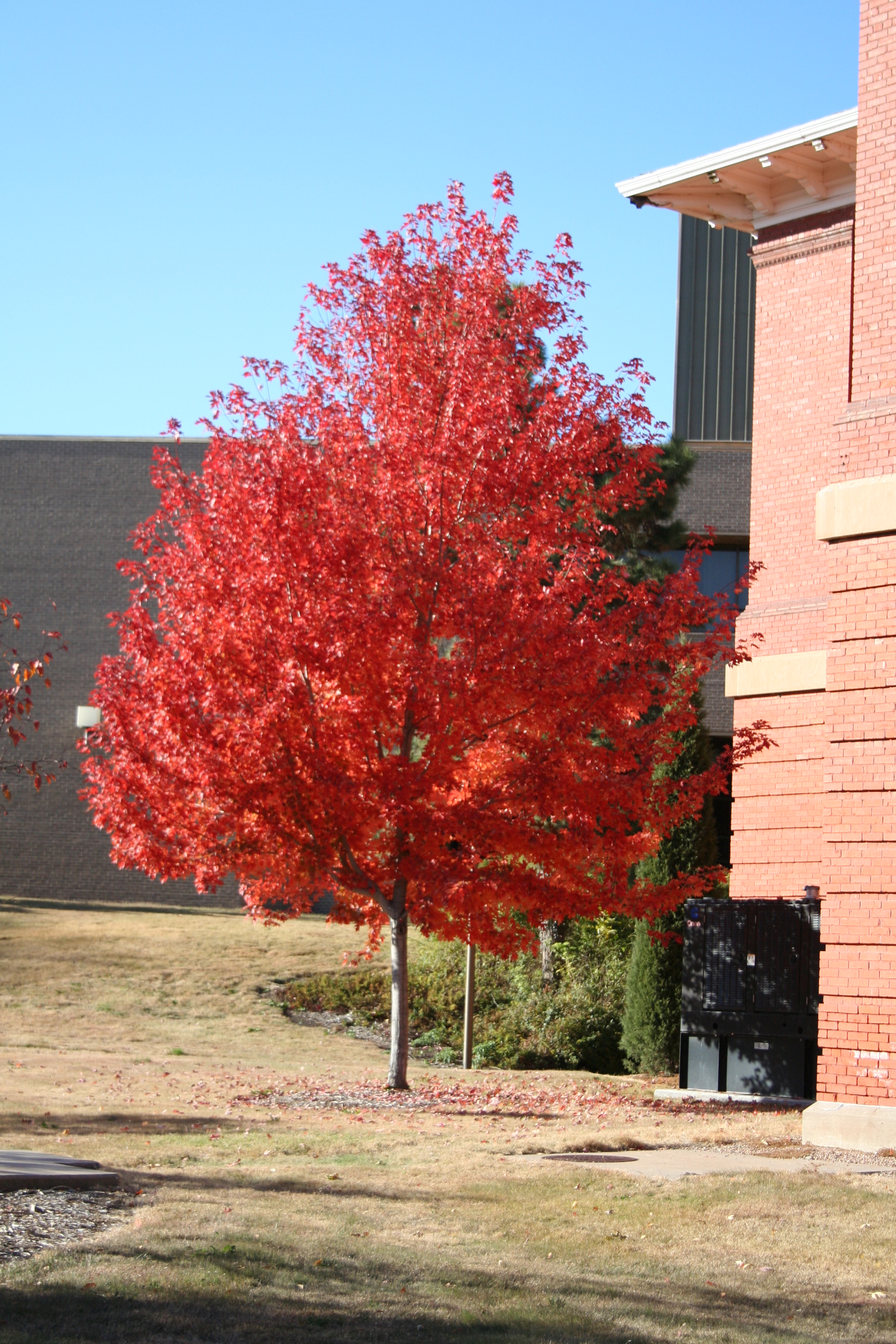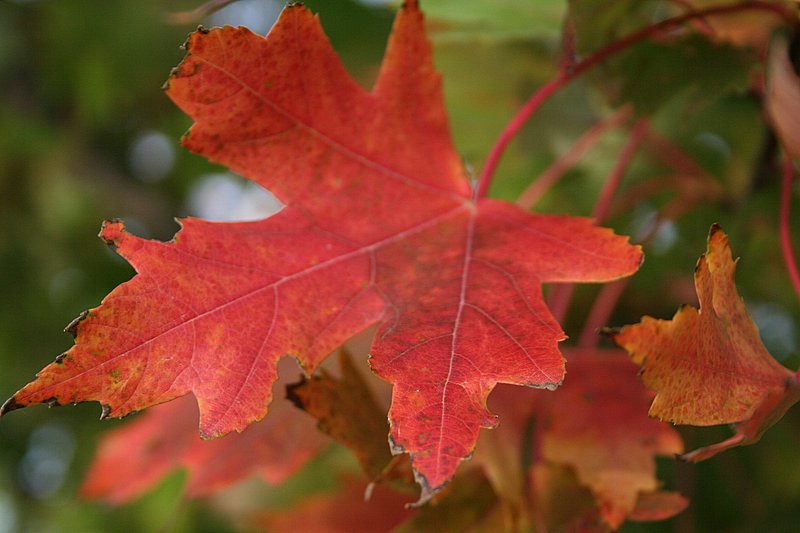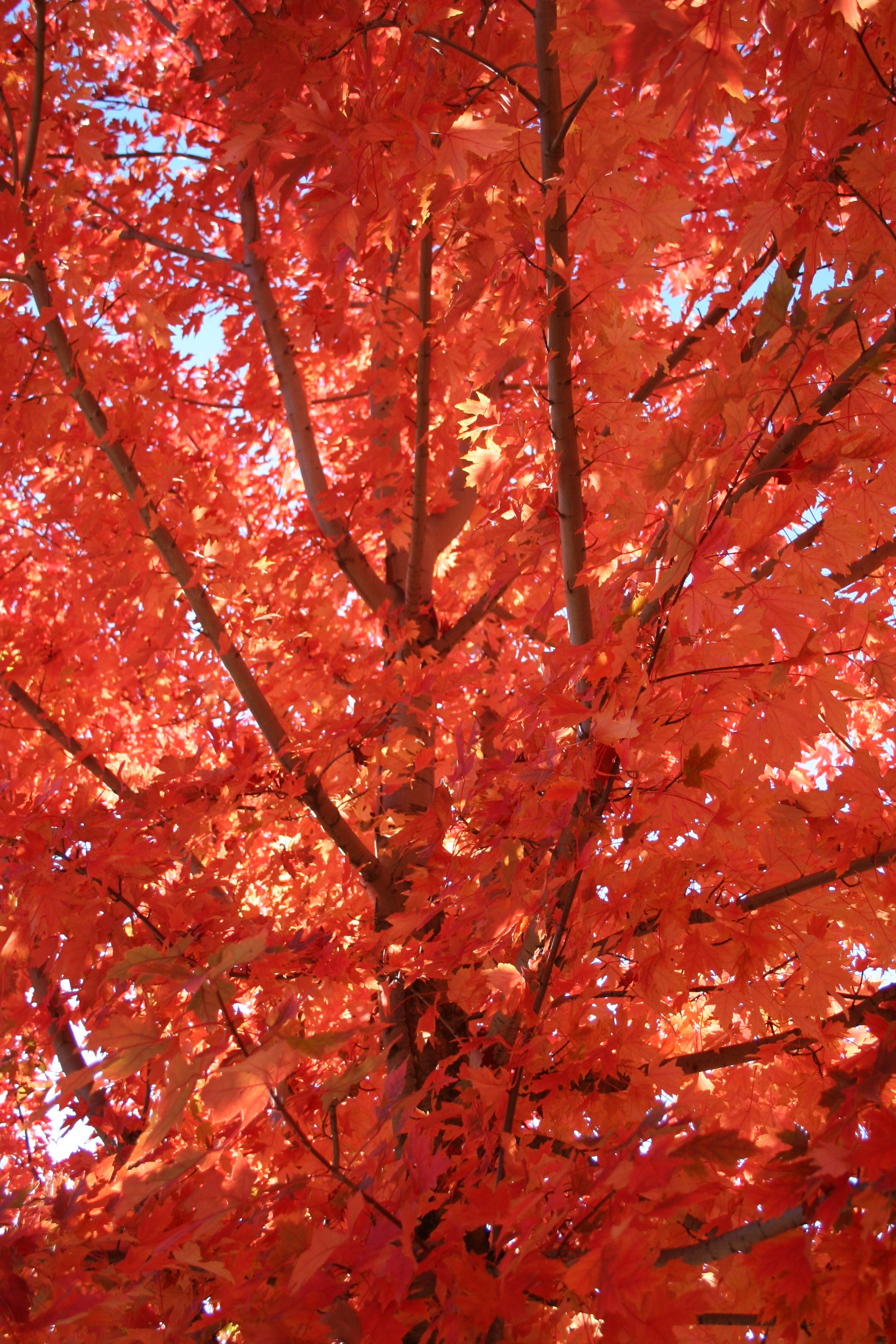Maple, Red
Acer rubrum, Deciduous
Red maple’s attractive shape, clean habit, and red fall color have made it one of the most commonly planted trees across the eastern United States including eastern Nebraska. The tree has a remarkably wide native range occurring from Minnesota to Newfoundland south to Florida and Texas, and most points in between.

Where To Grow

Size at Maturity
| Tree Height | Tree Spread |
| 35-50' | 25-40' |
Tree Characteristics
Red maple has attractive ornamental features in every season. Early in spring, before leafing out, clusters of tiny red flowers with long, showy stamens cover the branches. Emerging leaves and winged seeds are red. The petioles (leaf stems) are red throughout the growing season. Fall foliage is striking and the bark, light gray when young and shaggy with age, is a nice winter feature. Red maple gets its name from the reddish color of its young twigs and the reddish buds that are visible in winter.
Wildlife Benefits
Because of the abundance and wide distribution of red maple, its early-produced pollen may be important to the biology of bees and other pollen-dependent insects. Most references describe red maple as wind pollinated, but insect pollination may be important, as many insects, especially bees, visit the flowers. The seeds, buds, and flowers are eaten by various wildlife species. Squirrels and chipmunks store the seeds. White-tailed deer and elk browse red maple, and rabbits, which find the stump sprouts especially palatable, especially in fall and winter. Cavities in red maples in river-floodplain communities are often well suited for cavity nesters such as the wood duck and others.
Additional Considerations
Red maple is not drought tolerant or wind tolerant and it turns yellow on high pH soils—all common issues in the Great Plains. Many cloned cultivars of red maple have been developed including the very popular ‘Red Sunset’. ‘Burgundy Belle’ was developed in Kansas and is reported to have better drought tolerance than most. Cultivars with proven cold tolerance include ‘Autumn Spire’, ‘Northfire’, & ‘Rubyfrost’.
Related species
- Freeman maple (Acer x freemanii) is a hybrid between red maple and silver maple that has become one of the most commonly planted trees across the US in recent years. Freeman maples are generally fast growing, tolerant of wet (over-irrigated) lawns and typically have nice red fall color. Unfortunately, like silver maple they have poor branching structure making them prone to storm damage. A variety of this tree known as ‘Autumn Blaze’ maple may be the most common tree planted in the US. Other common cultivars include ‘Armstrong’, ‘Celebration’, ‘Marmo’, ‘Sienna Glen’ and ‘Scarlet Sentinel’. Freeman maples can grow 50-75’tall by 25-50’ wide. Although somewhat more adaptable than red maple, freeman maples should be limited primarily to the eastern half of Nebraska on pH neutral or acidic soils (ph 7.0 or below). Although not a bad tree, freeman maples are becoming overplanted and should be planted sparingly.
Interesting Facts
The species name rubrum refers to all the red characteristics evident in the tree: red flowers, red fruit (when developing), red young stems, red buds, and red leaves in the fall. Native Americans used red maple bark as an analgesic, wash for inflamed eyes and cataracts, and as a remedy for hives and muscular aches. Tea brewed from the inner bark has been used for treating coughs and diarrhea. Pioneers made cinnamon brown and black dyes from a bark extract.
References
- Tips for planting success
- NRCS Plant Guide
- Developed by Justin Evertson, Kyle Martens, and Denise Wally


